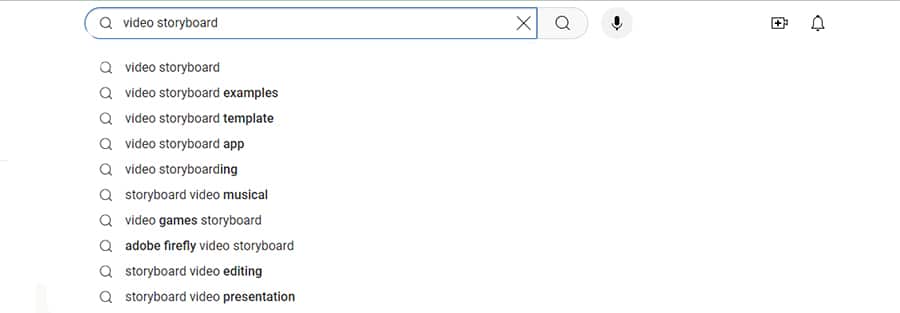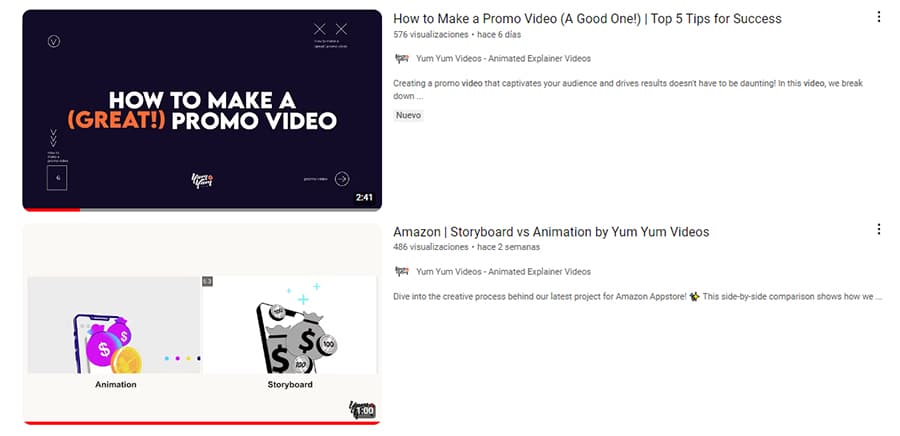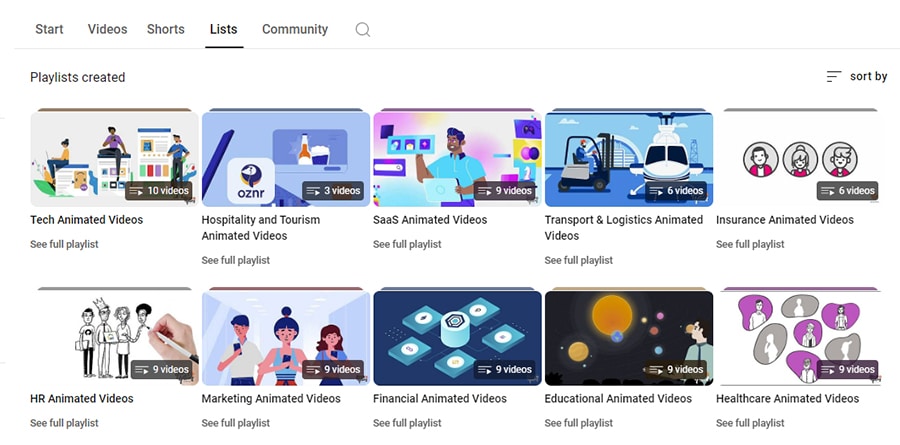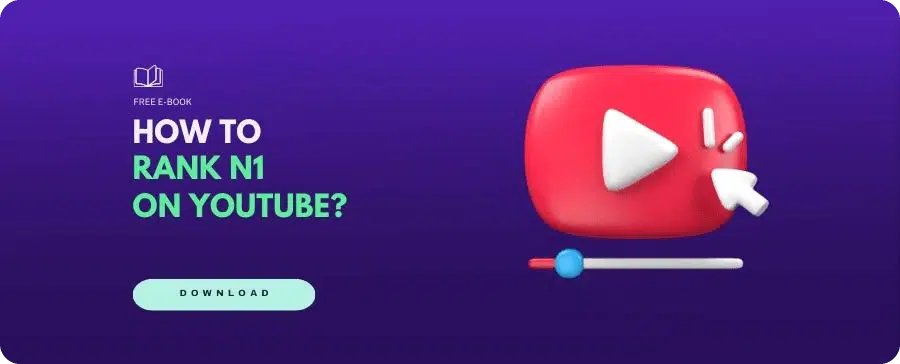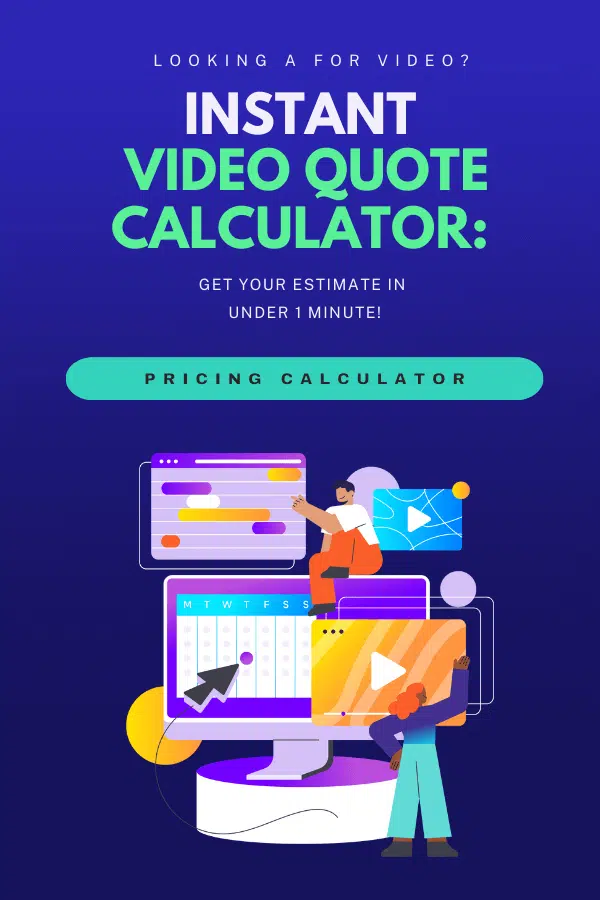Video SEO Guide: All You Need To Know To Optimize Videos Like A Pro
26/11/24
Author: Florencia Corazza
11 min reading
MarketingStrategy

Everyone and their mother will tell you how crucial video content and SEO are for your marketing efforts. However, most people fail to mention that there’s a place where both these strategies meet: video SEO.
For your videos to succeed, you must learn how to optimize them for the search engines just as you do with your website. This might sound easier said than done —after all, as a business owner, you probably already have a lot on your plate, and having to learn yet another practice might feel overwhelming.
Don’t worry, though! In this article, I’ll be tackling the easiest video SEO tips you can incorporate into your video production process 😉. In addition to some handy tips, I’ll also go over how to know if your efforts are paying off and what metrics you should prioritize.
Let’s dive in, shall we?
What Is Video SEO?
In short, this simply refers to optimizing your videos and their metadata —i.e., everything that surrounds a video, such as the title, description, and file information— to be properly analyzed and categorized (that is, indexed) by search engine crawlers, resulting in a higher ranking on the results pages.
Optimization should be a vital step in your video production process because you can spend thousands of dollars creating the perfect piece, but what’s the use of it if your target audience doesn’t watch it because no one can find it?
Although some aspects of it overlap with “traditional” SEO, such as using keywords and building up authority, there are some key tactics that are unique to the world of YouTube video SEO (and any other hosting platform, for that matter!) and are fundamental for the success of your strategy.
I’ll analyze each of them below.
7 Foolproof Video SEO Tips
I know this is what you came for, so I’ll cut the chit-chat. Here are the basics you should always keep in mind when optimizing your video content:
1. Choose Your Keywords Wisely
First and foremost, keywords and how you use them will always be the backbone of optimization, both for websites and video content.
However, what people search on Google can differ a lot from what they search on YouTube, so you’ll have to do your due diligence differently in each case —the keyword research you’ve done for your next blog post, for example, will most likely be useless for a future video if your audience isn’t interested in watching a video about it.
You can use a free keyword research tool, such as Google’s Keyword Planner, to check what queries your target audience is actually searching for, and leverage the data to find the keywords that best adapt to your videos and are actively being searched.
Such tools are useful for both your existing content and for getting suggestions for future pieces, but if you want to start brainstorming new ideas right away without too much hassle, you can also take advantage of YouTube’s autocomplete feature to see what kind of videos people are looking for:
I suggest you make a list of primary keywords first, which are the most simple and have the highest search volume, like “video marketing”. Then, make a list of secondary keywords which complement and refine them, adding context and narrowing down their scope, such as “video marketing best practices” or “video marketing for beginners”.
Once you’ve got your keywords ready, it’s time to put them to good use. That’s where metadata optimization comes in!
2. Optimize Your Video Metadata
Placing your primary keyword in the title of your video is the most basic step in your video SEO optimization journey, but there are more metadata elements you can take advantage of to help YouTube understand what your video is about. The good news is that it’s as simple as adding a keyword in the file name, description, and tags.
I’ll tackle correct formatting (that is, file names) in a bit, so let’s focus on descriptions and tags for now.
The search engine crawlers can’t watch your video to determine its content and index it correctly, so you need to help them with crawlable text whenever possible. Additionally, you should keep in mind that YouTube displays the first 125 characters of a video’s description on the results page, so potential viewers can scan yours to determine if it interests them or not.
Of course, you shouldn’t stuff your description with keywords to satisfy the crawlers —you’ll end up at the bottom of the search results if the bots detect you’re trying to outsmart them. Instead, write a compelling, informative caption, using action words whenever possible, and explaining in detail what your video is about and why it might be useful and interesting for viewers, inserting keywords naturally throughout.
As for tags, you’ll probably find marketers tend to have mixed opinions: some say they don’t do much, but I’m a firm believer in helping the crawlers understand your content as much as possible, and tags are another tool to do so. So, add 3-5 tags per video, using your primary and secondary keywords and phrases that accurately reflect what the piece is about.
3. Upload a Video Transcript
As I mentioned above, the crawlers need text to analyze what your piece is about and rank it appropriately. That’s why taking the time to manually transcribe the audio instead of relying on YouTube’s automatic captioning can be a super beneficial tool for your video SEO optimization.
Doing so not only ensures your content is correctly parsed by the crawlers, improving searchability (you’ve probably seen what atrocities automatic captioning can come up with…) but also expands your reach to audiences with hearing problems. A wider reach translates into more interactions from your viewers, building up your authority and directly—and positively—impacting SEO.
Additionally, more and more people are watching subtitled videos just for the sake of it, so you’re probably missing out on a big chunk of viewers if you don’t make your content accessible to them.
4. Craft an Eye-Catching Thumbnail
I’ll dive into the metrics that help your optimization later on, but I’m sure you’re already acquainted with how a high CTR can do wonders for your rankings. One of the most important —maybe even the most important— elements to make viewers click on your YouTube content in the first place is an attractive, unique thumbnail.
While most video hosting platforms choose a random frame from your video as the default thumbnail, I strongly suggest you create a custom one that accurately reflects what the video is about and instantly catches the eye of potential viewers.
For example, take a look at our thumbnails: they’re simple yet faithful to the topic we’re tackling in the video, and make use of our brand’s characteristic color scheme and fonts to achieve a cohesive style throughout all our assets, making it easy to remember for viewers who come across another video of ours in the future 😉.
5. Leverage the Power of Video Series
In addition to making viewers click on your videos, you want them to stay on the page and keep watching your content, as YouTube loves creators who get users to keep watching videos and browsing the platform, regarding it as one of the top ranking factors.
One way to encourage them to do so is to make your videos part of a playlist of similar content. In fact, YouTube will even show playlists at the top of the SERPs if they’re related to the user’s query, so even the platform itself wants you to create and update video series frequently.
Even if you don’t have enough videos for a particular series, you can make playlists of related content to make the most out of your channel. Take a look at our playlists: although all our videos are stand-alone, we try to include every single one in a playlist depending on their genre or topic to encourage extended watch times from our audience and increase our chances of getting indexed at the top of the SERPs.
6. Format Your Videos Correctly
Something most people don’t know about is that even something as simple as having a generic file name and using the wrong video format can be detrimental to YouTube video SEO.
In addition to using your primary keyword as part of the file name, you should avoid any special characters, numbers, and underscores. Instead, opt for hyphens to separate words; according to Google, search engines interpret hyphens as spaces between words, while other symbols are usually not recognized and can negatively impact SEO.
For example, a video about baking chocolate cookies would have a file name like “how-to-bake-chocolate-cookies.MP4”.
Regarding the file format, there are several options to choose from, such as .MOV, .AVI, and .WMV, but Google itself will tell you that they prefer MPEG-2 files saved with a .MPG extension, in HD resolution.
Keep in mind that some formats, like .camproj or .mswmm, aren’t supported and will need to be converted before uploading.
7. Build Up Your Channel Authority
Last, but certainly not least, is working on improving your channel’s authority.
Much like traditional optimization for websites, video SEO optimization places special emphasis on authority, ranking high-authority channels above new or “weak” ones.
The most effective way to build authority is to nurture a strong community that frequently and consistently engages with your content, letting the crawlers know your videos are trustworthy and valuable for viewers. That’s why CTAs encouraging your audience to subscribe, like, comment, and share your videos on social media are crucial, even if you feel they don’t do much.
Here’s a final little pro tip: something as simple as answering comments the first few hours after uploading a video can greatly motivate viewers to share their thoughts with you, in hopes of getting a response!
How Do I Know if My Video SEO Is Working?
After you’ve put all these video SEO tips into practice, you must keep track of your performance metrics to see where you’re succeeding and where there’s still room for improvement.
These are the most important metrics you should monitor:
- Total Watch Time. This is the total number of minutes viewers have spent watching your videos. The algorithm ranks videos with higher watch times above those with fewer minutes, so make it a priority! Long, engaging pieces will increase audience retention and, therefore, your TWT.
- Average Percentage Viewed. This metric measures the average number of minutes watched by your viewers in any single video. Checking which videos have higher percentages can help you determine what strategies and topics are making your audience stay longer, so you can replicate it in future content.
- Engagement. YouTube wants users to actively engage with videos, so a high amount of likes, comments, and shares is crucial to ranking higher in the SERPs. Try to research your audience’s likes and dislikes to produce videos that perfectly cater to their needs and encourage engagement.
- Demographics. It’s not unusual to start sharing videos with a certain audience in mind and have it change through time, so you should periodically check exactly who is watching your content and who you want to have watching it. That way, you ensure you’re creating videos your viewers are truly interested in —or, on the contrary, start approaching different topics to attract a totally different demographic if that’s what your strategy calls for.
- CTR. Your Click-Through Rate measures how successful your video was at catching the eye of users and prompting them to click on it. Here’s where your thumbnail, title, and description play a very important role! However, a high CTR coupled with a high bounce rate (that is, the number of people leaving your video after just a few seconds) will negatively impact your rankings, so the actual content of your video should be as engaging and interesting as its metadata.
Wrapping Up
That’s it for this article! I hope you found my video SEO tips useful 😃.
I know this was probably quite a lot of information to digest if you had never heard of video SEO optimization before, but I promise that applying these tips is well worth it. After all, video content is such an amazing and helpful tool to reach your audience and make your brand grow — why not take the extra time to ensure it can succeed?
If done right, you can take your content to the next level and convert those coveted potential viewers into faithful clients and subscribers with just a few tweaks and strategically placed keywords. I’m sure you’ll be happy you followed my advice!

Florencia Corazza – Content Writer and Co-Editor
A skilled writer, translator, and co-editor for our web and blog content. As a self-defined "wordsmith," she’s talented in adapting the latest marketing news into all kinds of digital formats. If she’s not watching the latest Sci-Fi show on Netflix, then can find her tending to her perfectly reasonable number of plants.
